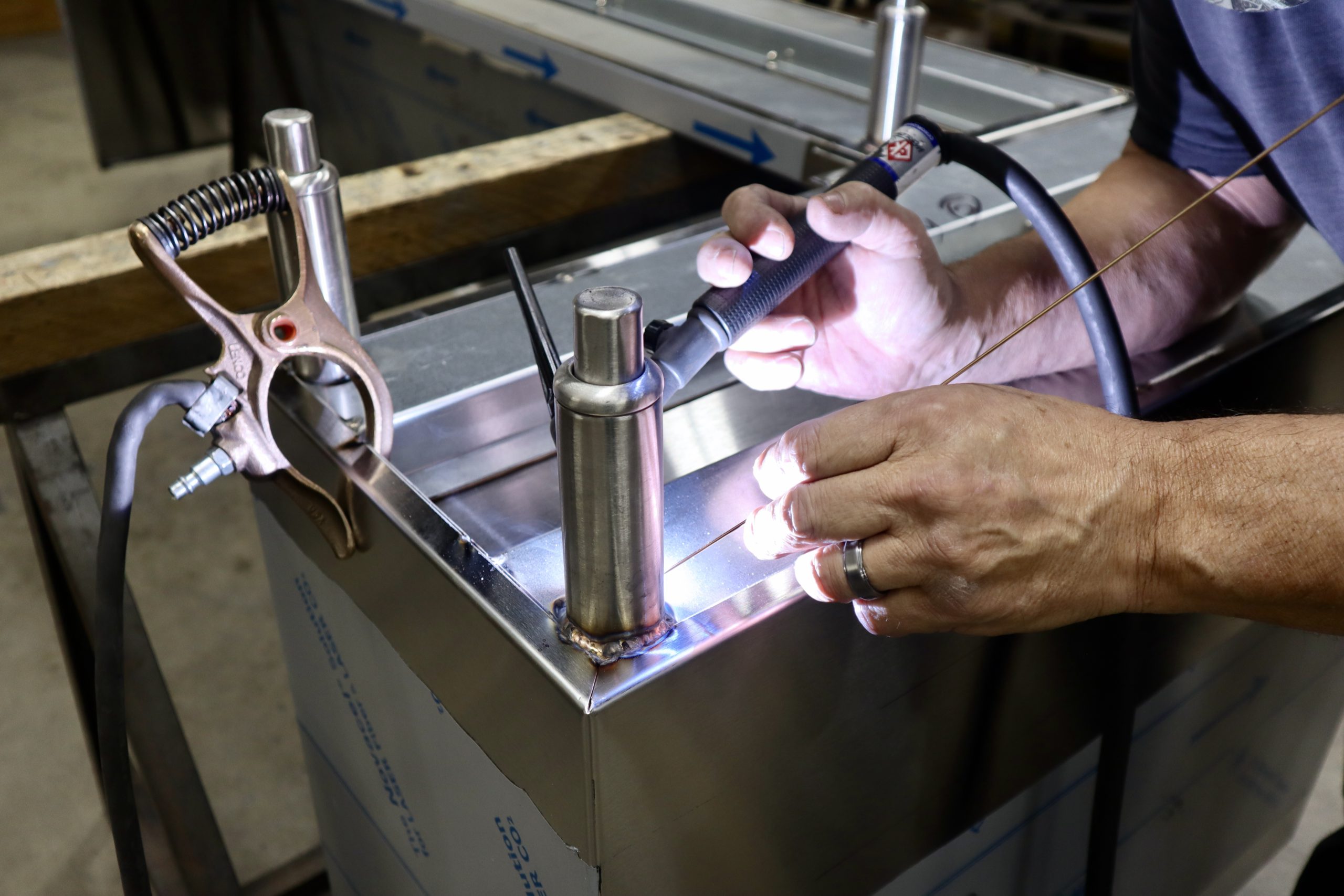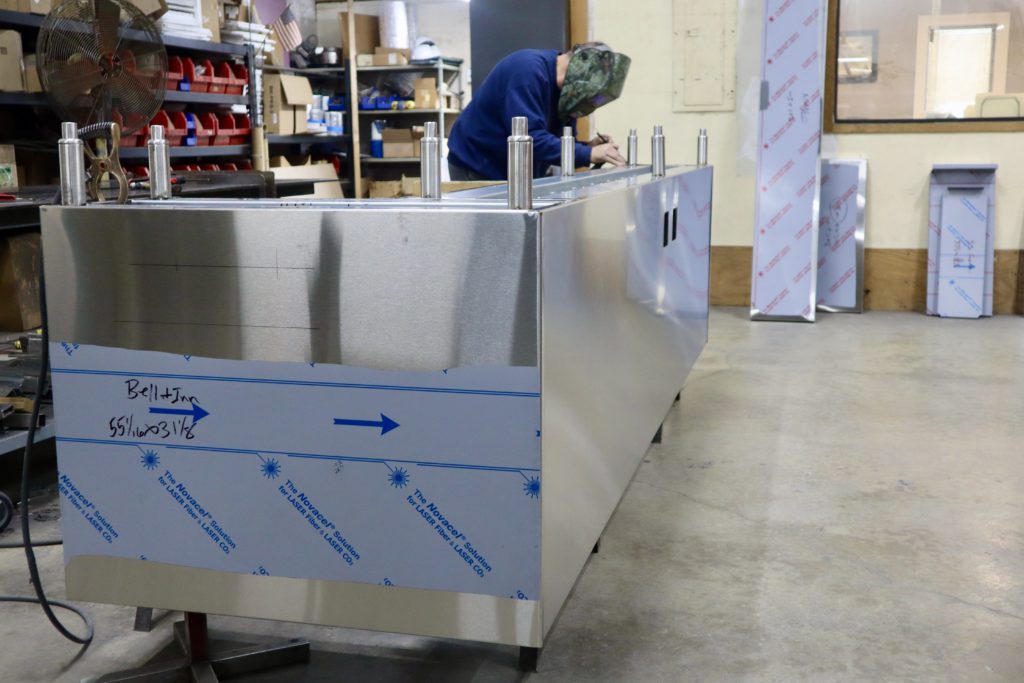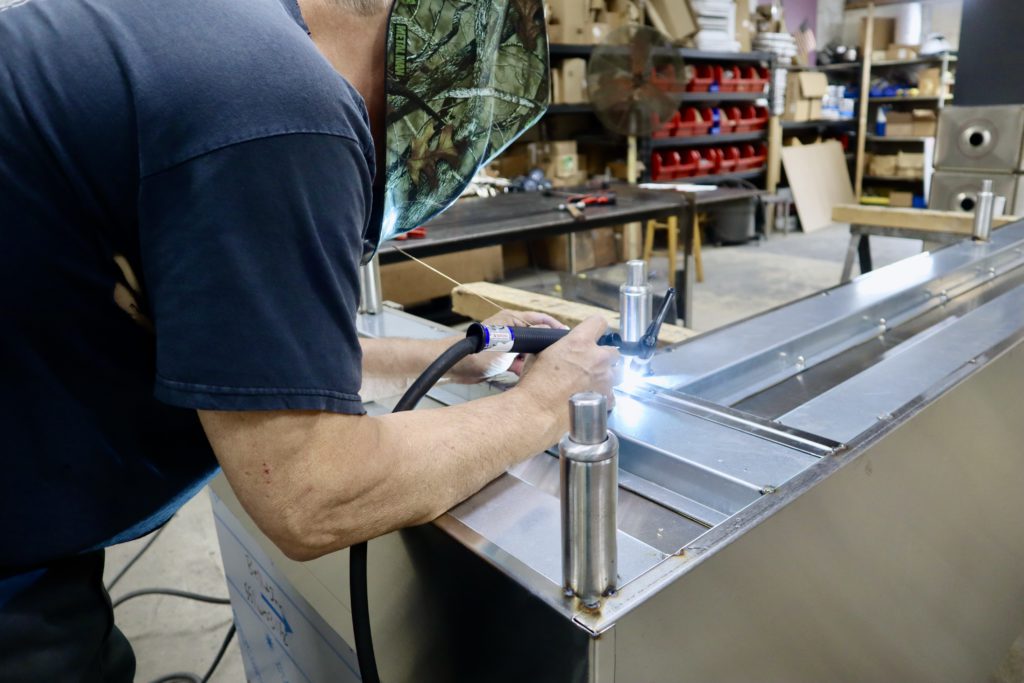
Steel welding is the process of joining two or more steel pieces together by heating them to a molten state and allowing them to fuse. Welding is a commonly used method in steel fabrication, construction, automotive, and various other industries. It is essential for creating strong and permanent connections between steel components. Here are some key aspects of steel welding:
Welding Methods: There are several welding methods commonly used for steel welding, including:
a. MIG (Metal Inert Gas) Welding: Also known as Gas Metal Arc Welding (GMAW), MIG welding uses a continuous wire electrode and shielding gas to create an arc between the electrode and the base metal. The heat of the arc melts the electrode and the base metal, forming a weld.
b. TIG (Tungsten Inert Gas) Welding: TIG welding, or Gas Tungsten Arc Welding (GTAW), uses a non-consumable tungsten electrode and a shielding gas to create an arc. The heat generated by the arc melts the base metal, and a filler rod may be used to add material to the weld joint if necessary.
c. Stick Welding: Also known as Shielded Metal Arc Welding (SMAW), stick welding uses a consumable electrode coated with flux. The flux creates a shielding gas when heated, protecting the weld from contamination. The electrode is manually fed into the weld joint.
d. Flux-Cored Arc Welding (FCAW): FCAW is similar to MIG welding but uses a flux-filled wire electrode. The flux produces a shielding gas when heated, eliminating the need for an external shielding gas.
Welding Preparation: Prior to welding, the steel surfaces must be properly prepared. This involves cleaning the surfaces to remove dirt, oil, rust, and other contaminants that can affect the quality of the weld. Proper fit-up and alignment of the steel pieces are also crucial to ensure good weld penetration and strength.
Welding Parameters: Welding parameters such as voltage, current, travel speed, and wire feed speed need to be carefully selected based on the steel type, thickness, and joint configuration. These parameters determine the heat input and affect the quality and integrity of the weld.
Joint Design: The design of the joint plays a significant role in welding. Common joint types for steel welding include butt joints, lap joints, corner joints, and T-joints. The joint design should provide adequate access for welding and ensure sufficient strength and load-bearing capacity.
Filler Material: In many steel welding applications, a filler material is used to add material to the weld joint and provide additional strength. The filler material should be compatible with the base metal and chosen based on factors such as tensile strength, corrosion resistance, and weldability.
Welding Safety: Welding involves intense heat, bright light, and the production of hazardous fumes and sparks. Proper safety measures must be followed, including the use of personal protective equipment (PPE) like welding helmets, gloves, and protective clothing. Adequate ventilation and fire safety precautions should be in place.
Post-Welding Treatment: After welding, various post-welding treatments may be required, depending on the application and desired outcome. These treatments can include grinding, polishing, heat treatment, stress relieving, or applying surface coatings for additional protection or aesthetics.
Steel welding requires skill and expertise to ensure proper fusion, strength, and quality of the weld. Qualified welders should follow industry standards, codes, and best practices to achieve reliable and durable welded connections in steel structures and components.


